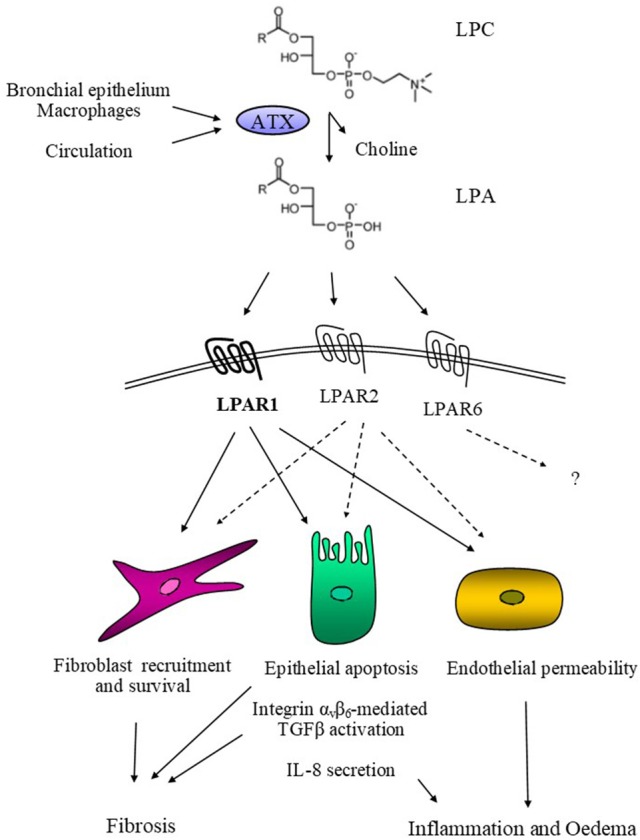Figure 1.

Schematic representation of ATX's mode of action in pulmonary fibrosis. ATX, derived from the bronchial epithelium and alveolar macrophages or extravasated from the circulation, catalyses the hydrolysis of LPC and the local production of LPA. In turn, LPA activates its cognate receptors LPAR1, possibly LPAR2, and hypothetically LPAR6, activating the corresponding G-protein-mediated signal transduction cascades. As a result, LPA induces epithelial apoptosis, the initiating pathogenetic event in modeled pulmonary fibrosis and possibly IPF. LPA also induces IL-8 secretion from epithelial cells, promoting inflammation, while it also stimulates endothelial permeability, thus promoting pulmonary oedema. Moreover, LPA stimulate the αvβ6-mediated TGFβ activation leading to the activation and trans-differentiation of pulmonary fibroblasts, for which LPA is additionally a pro-survival and chemotactic factor.
